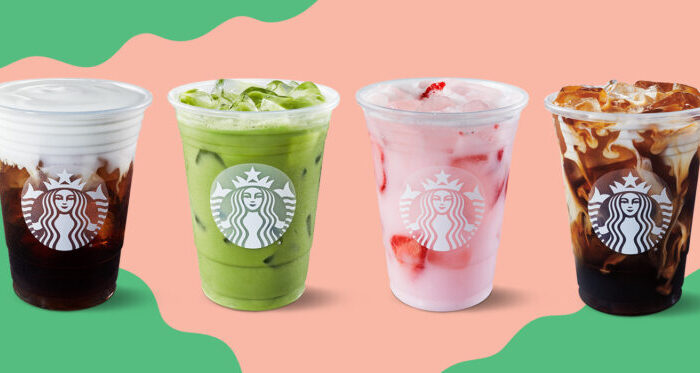
Why Starbucks and Nike Should Study LVMH
Two of the most astonishing branding stories this year have been the struggles of Nike and Starbucks. Both firms might benefit from studying luxury giant LVMH.
Starbucks and Nike
A few years back, Nike and Starbucks were business school go-to brands. Want an example of a strong brand? How about Nike or Starbucks? Looking for a firm that has innovated and found new growth opportunities? Maybe Nike or Starbucks?
Today, of course, the situation is vastly different. Both firms are struggling. While the S&P 500 soars, Nike’s stock price is down more than 50% from its peak. Starbucks is having similar troubles, with its stock down more than 30%.
Not surprisingly, the firms are churning through CEOs. Both just brought on new leadership this summer.
In some ways, the companies face similar problems. In a bid to grow, executives took steps that weakened the core of the business.
Nike lost its focus on athletic achievement and began to focus more on fashion and collectibles. Its partnership with Tiffany was a striking example of just how far the brand strayed from its core. More focused brands like On and Hoka are now stealing share and Nike is adrift.
Starbucks began with a focus on the coffee culture and an inviting store experience, Howard Schultz’s “third place.” This all went away as the company introduced a vast variety of drinks, many complicated to make and not related to coffee at all. Starbucks also redesigned stores to maximize efficiency and the take-out business. The “third place” was a financial drag on operations.
It is easy to say Nike and Starbucks shouldn’t have focused so much on growth, but this isn’t realistic. Companies have to deliver profit and cash flow growth.
Perhaps instead the problem is that they relied so much on just one brand.
The LVMH Model
One of the most successful firms in the world is LVMH. The company owns more than 75 different luxury brands, everything from Louis Vuitton to Tiffany to Rimowa.
The power of the LVMH brand portfolio is that it gives the company many ways to grow. One year perhaps brand A will be a growth driver. The next year brand B might align with trends. If brand C is at risk of losing its exclusivity, it can pull back and reduce revenues as other brands step up.
LVMH can also keep each brand focused on its target. With a portfolio, each brand can remain true to its positioning, resisting the temptation to stretch and extend too far.
A portfolio approach also makes acquisitions relatively easy. The simplest way to deliver growth? Acquire a new brand that brings revenue and further growth potential.
LVMH has delivered remarkable financial results, with a current market cap of more than $350 billion. Until recently, it was the most valuable company in Europe. CEO Bernard Arnault is one of the richest people in the world, worth more than Microsoft’s Bill Gates.
An Idea for Starbucks and Nike
It may be time for both Starbucks and Nike to take the LVMH approach and embrace a portfolio of brands. Perhaps Starbucks should narrow the Starbucks brand, regaining a focus on the core positoning. The company could introduce a second brand to address opportunities that don’t fit under Starbucks. Nike can similarly retrench.
Acquisitions seem appropriate for both brands. Now some may argue that acquiring a small brand won’t have much impact on a company the size of Nike or Starbucks. But when the challenge is to grow revenue by 4 or 5% annually, a brand even 1% of the size of parent can meaningfully contribute to the gap.
Maybe Starbucks should merge with Cava, adding a completely new growth opportunity, while staying in hospitality and food. Perhaps Nike should finally acquire Peloton. There are many different ways to grow once you are open to expanding the portfolio.
The LVMH model is compelling and perhaps the most strategic way for both Nike and Starbucks to move forward.
How much do you think this could also be due to cost cutting and chasing profits? I’ve been wearing the same Nike’s for decades (Air Pegasus, in case you are wondering) and I swear the quality just isn’t there anymore. They start to fall apart with just daily walking within a few months. Before, they lasted much longer with much tougher daily wear. I think I wore some pairs more than a year. Now I’m lucky if they last 4 months. Perhaps not as extreme as the Boeing situation, but I think when you stray from a focus on quality and chase those profit dollars, it may work the first year or several years, but then it catches up to you.
I think that is part of it, too. Nike pushed profit growth too hard and really damanged the brand. A sad story.
Howard Schultz’s vision of Starbucks as an ambassador of Italian coffee culture has given way to its role as a convenient staple in the US, while in emerging markets, it remains both an aspirational and experiential brand. Starbucks is now in a tug of war between growth, brand aspirations, and consumer reality. Their channel and partner strategies need work. And Nike? It needs to return to its roots of producing outstanding products.
Well said!